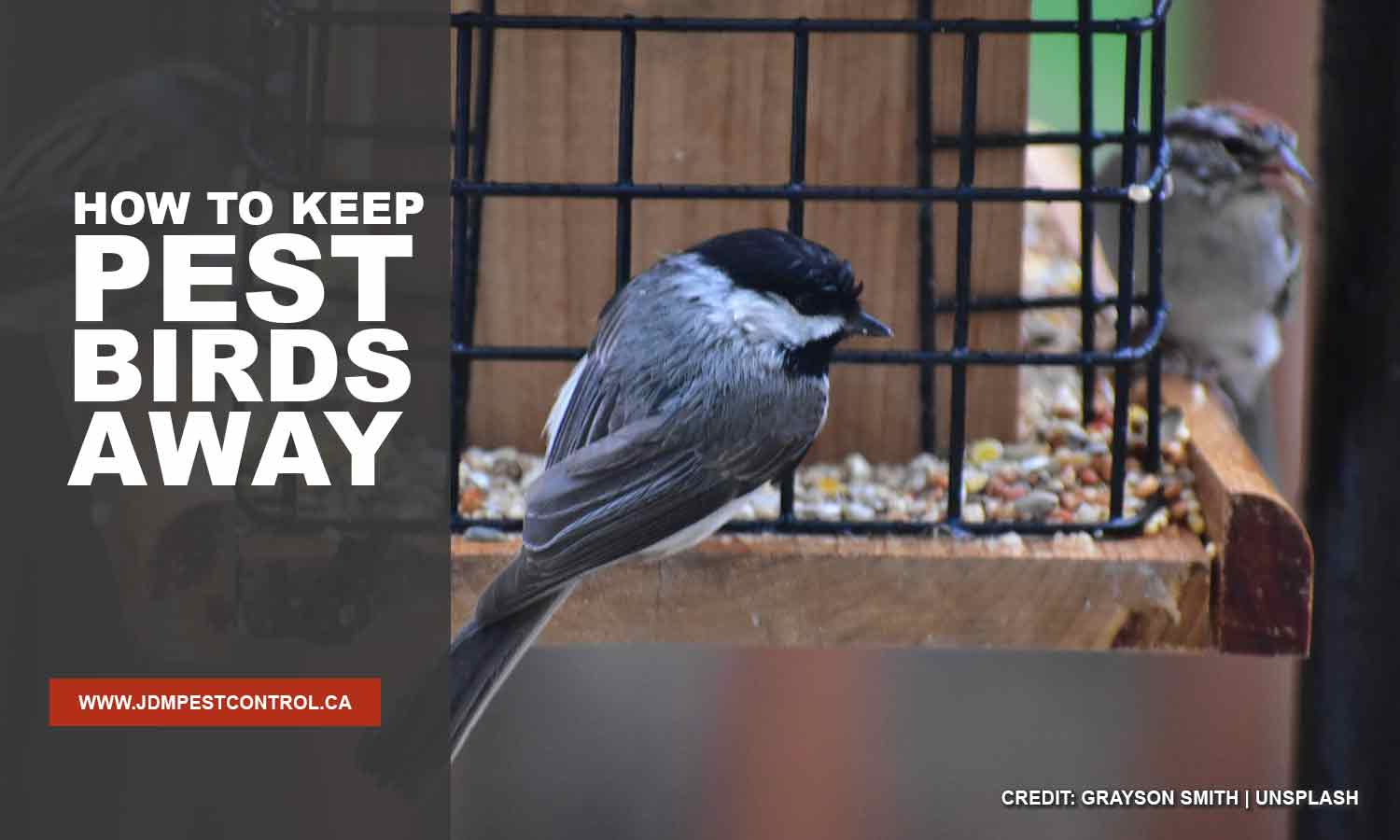Sometimes, it’s nice having birds around the house. They can be a great help in keeping pest populations low and preventing the creepy-crawlies from entering the house. If you can attract some songbirds, their singing can also give you some nice melodies to wake up to in the mornings. However, birds can overstay their welcome and become more trouble than they’re worth. When you hit that point, it’s probably time to start thinking of ways to get rid of them.
Identifying the Pest Bird Species
Before you start taking any major steps toward removing any species from your garden, it’s important to know what you’re dealing with first. As any professional pest control team will tell you, you need to know your pests to know the optimal ways to manage their presence. Some of the common bird species you can expect to find include:
-
Pigeons
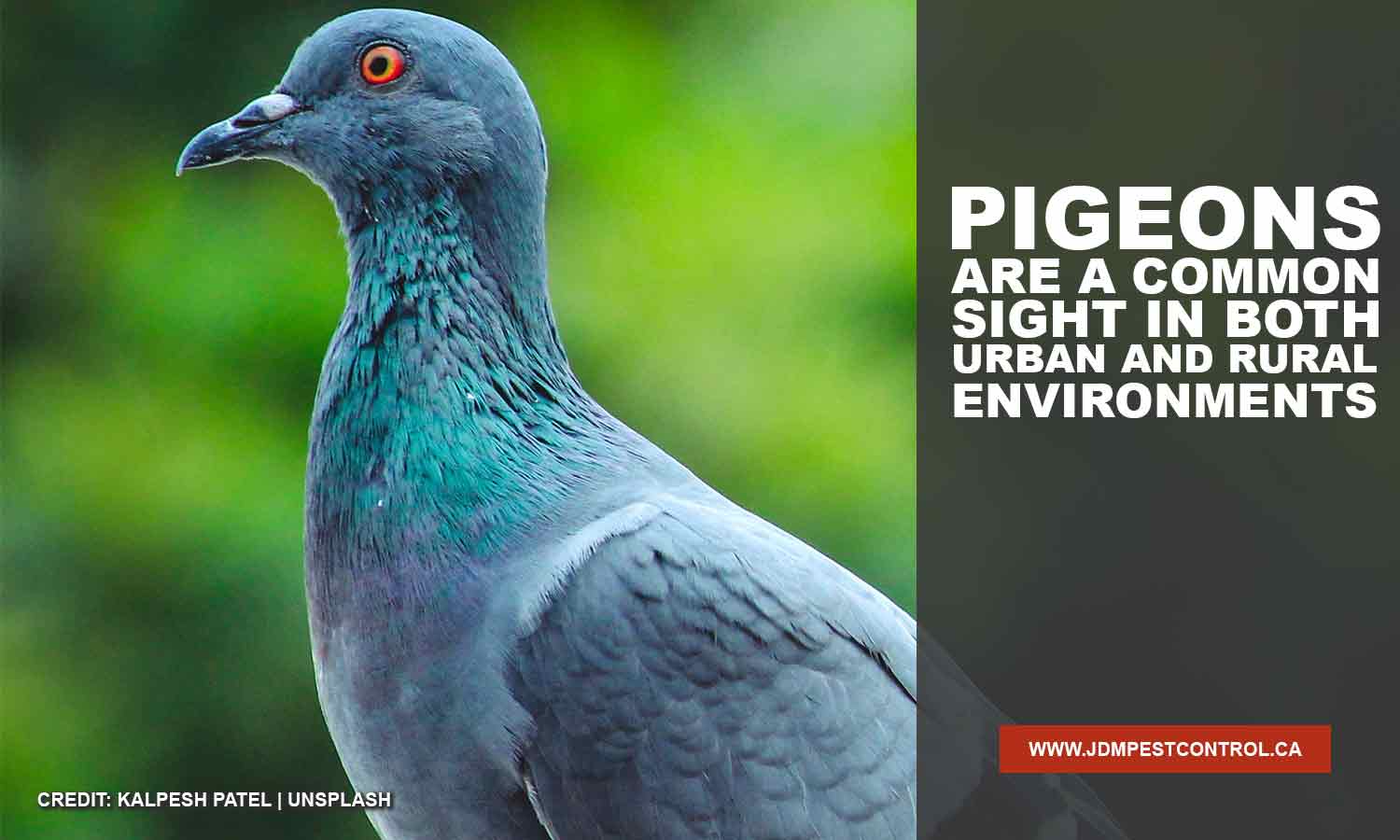
Pigeons are generally one of the top pest birds in North America. An adult pigeon is roughly 28 centimetres in length, with a short head and short legs. Pigeons can congregate in both rural and urban environments, so keep an eye out to prevent an infestation.
The problem:
Pigeon nests can block exhaust and ventilation, increasing the wear and tear on your HVAC system. Their droppings are also extremely acidic and can damage materials ranging from siding and wood to paint and concrete.
-
House sparrows
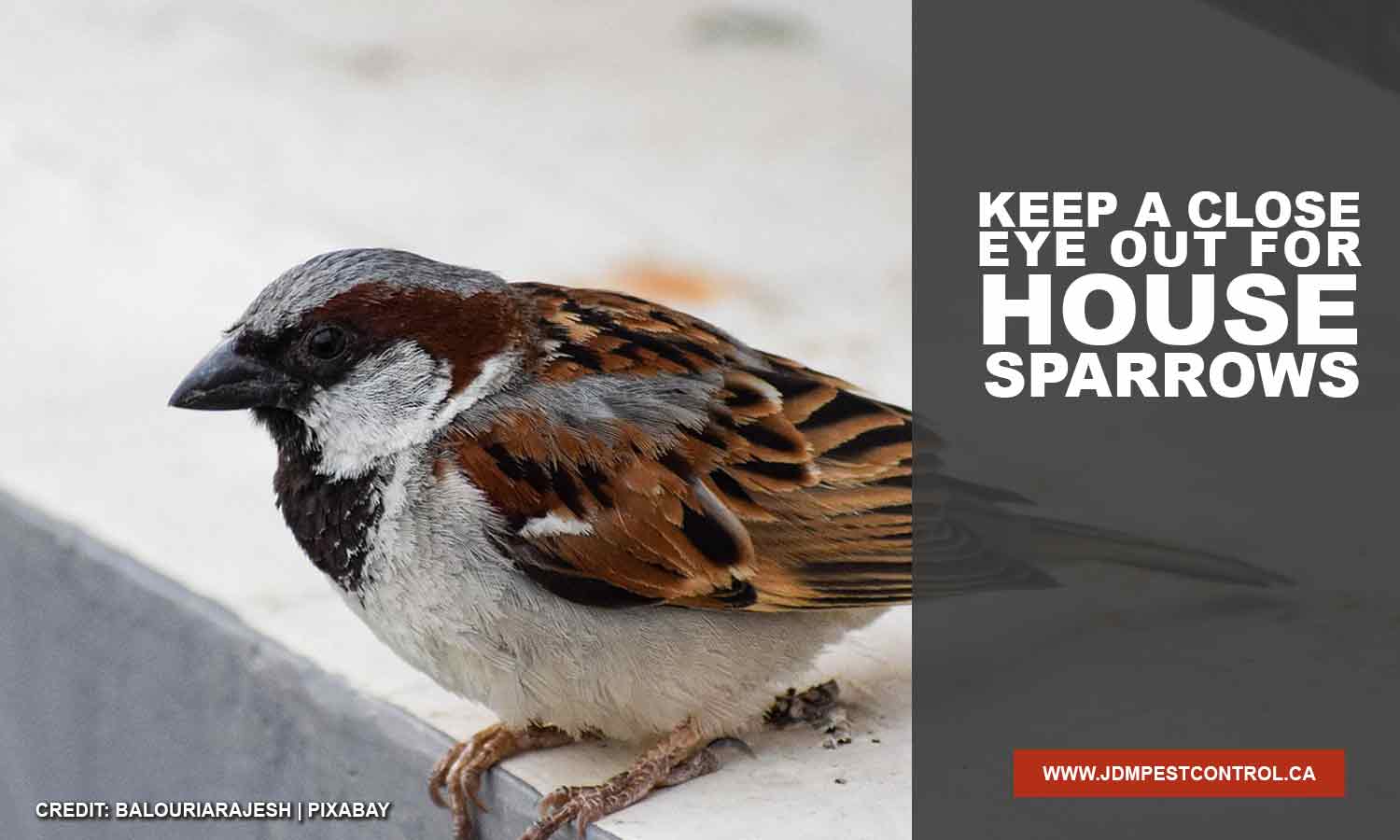
House sparrows are quite recognizable. Keep an eye out for their grey and brown feathers, and cone-shaped bill.
The problem:
House sparrows get their name because of their high dependence on humans for food and shelter. House sparrows are also notorious for aggressive behaviour and explosive breeding, making them a persistent issue if not dealt with right away.
-
European starlings
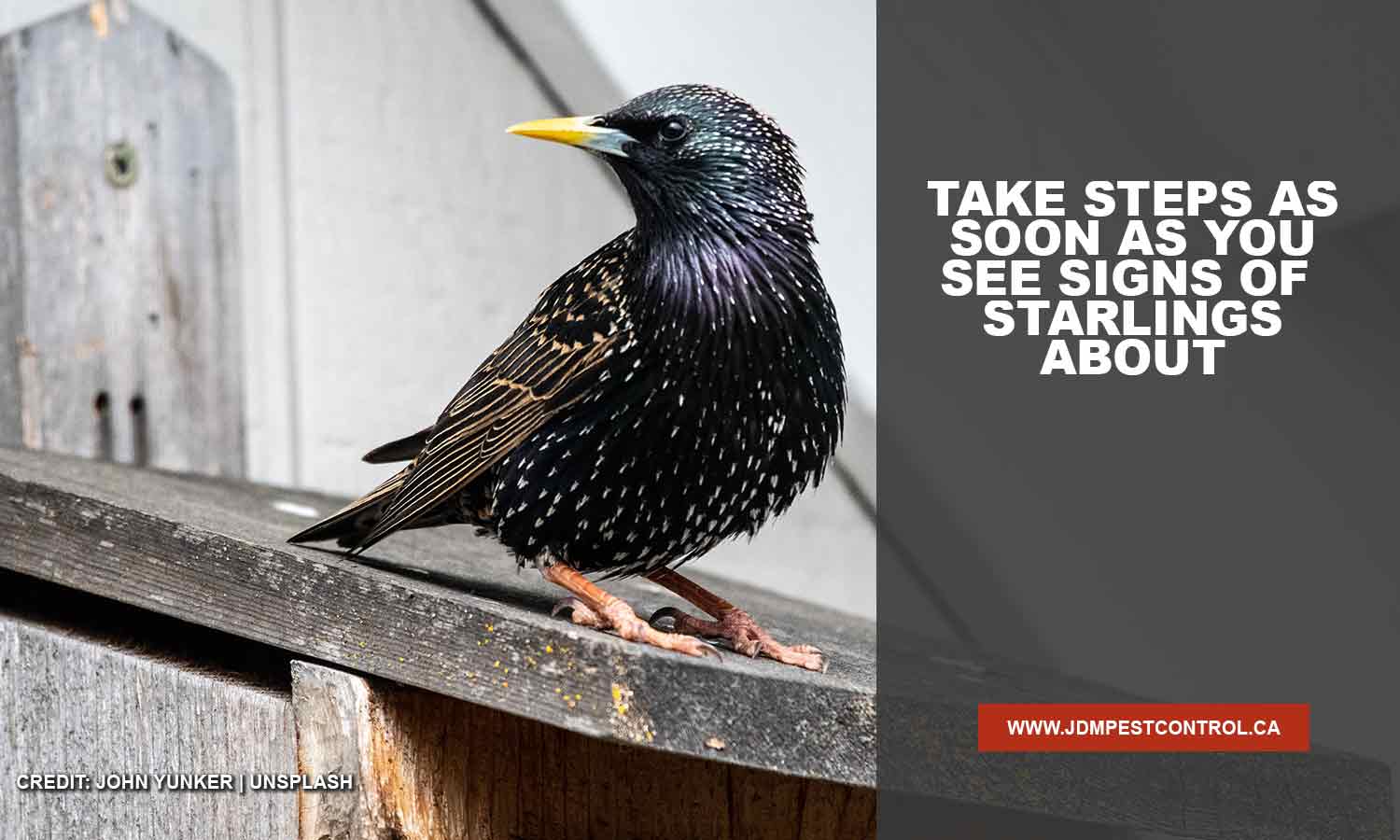
Like pigeons, starlings are a common pest in rural and urban communities. Starlings are typically around 20 centimetres long and feature a long bill and short tail.
The problem:
They’re infamous for nesting in extremely large numbers, effectively taking over entire areas, as well as driving out other species.
Managing Pest Bird Populations
Many pest birds also carry infectious diseases, giving you an additional reason to take any large bird infestation seriously. Aside from knowing which common pest bird species are likely to be a bother, it’s also worth having a few tricks up your sleeve to deal with them. Here’s a list of ways you can keep birds away from your home.
-
Remove food sources
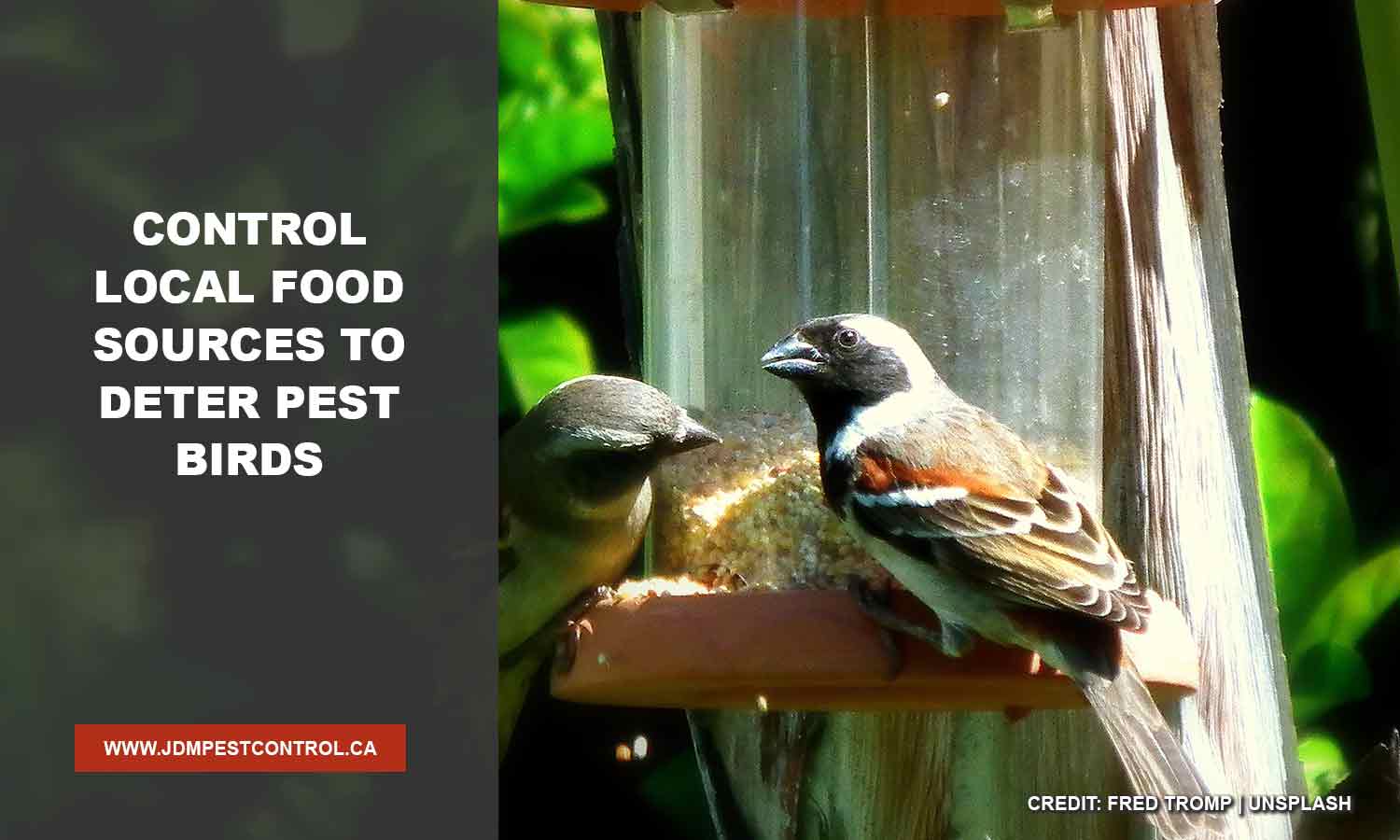
Like with other pests, it’s vital you control access to sources of food and water outdoors to deter them from making an appearance. Some homeowners like to have a bird feeder in the garden to help attract the right kind of birds to the property. However, when you start attracting the wrong kind of birds, it’s usually a good idea to remove the feeder for a while (particularly during the warmer months).
Different bird species are prevalent at different times, so you can return the feeder at times when pest birds are less common. You can also vary the food you put in the feeder to avoid giving the pests the food they want. Avoid putting suet and corn in the feeder to keep from attracting sparrows and starlings. Stick to whole peanuts and sunflower seeds instead. It’s also a great way to maintain good feeding practices to take better care of the birds you do want in your garden.
-
Eliminate potential nesting spots
Removing potential nesting areas is another effective strategy for controlling pest populations, and that includes birds. Birds naturally prefer making nests in trees, so target your trees to make them less favourable for pests coming to roost.
Trim trees regularly to remove any low-hanging or excess branches that may look attractive to nesting birds. Pay special attention to any branches hanging close to the roof. As mouse control experts will tell you, these branches offer easy entry into the house. This is true for birds and other pests as well. Some species of birds can also make nests inside garden debris, like thick shrubbery or dead logs. Thin out any thick vegetation on the ground level and clear away the garden of leaves, wood, and cut grass. Not only does the debris provide cover, but any material in plain sight is liable to become material for those birds to make their nests.
-
Seal potential entry points
Pests are all too happy to take advantage of any vulnerabilities (like holes in the walls) to enter a house. Many pest species like starlings also use small spaces to make nests.
Take a walk around the perimeter of the house to detect any holes that could work as entry points into the house. Seal up those holes temporarily with steel wool, copper mesh, or wood. For a more permanent solution, call professional builders to seal the holes so future pests can’t make their way in easily. Keep your other entry points in mind as well to ensure you cover all your vulnerabilities. Seal your chimneys, gutters, and vents with mesh screens to deny birds and other pests easy entry inside.
-
Employ decoys
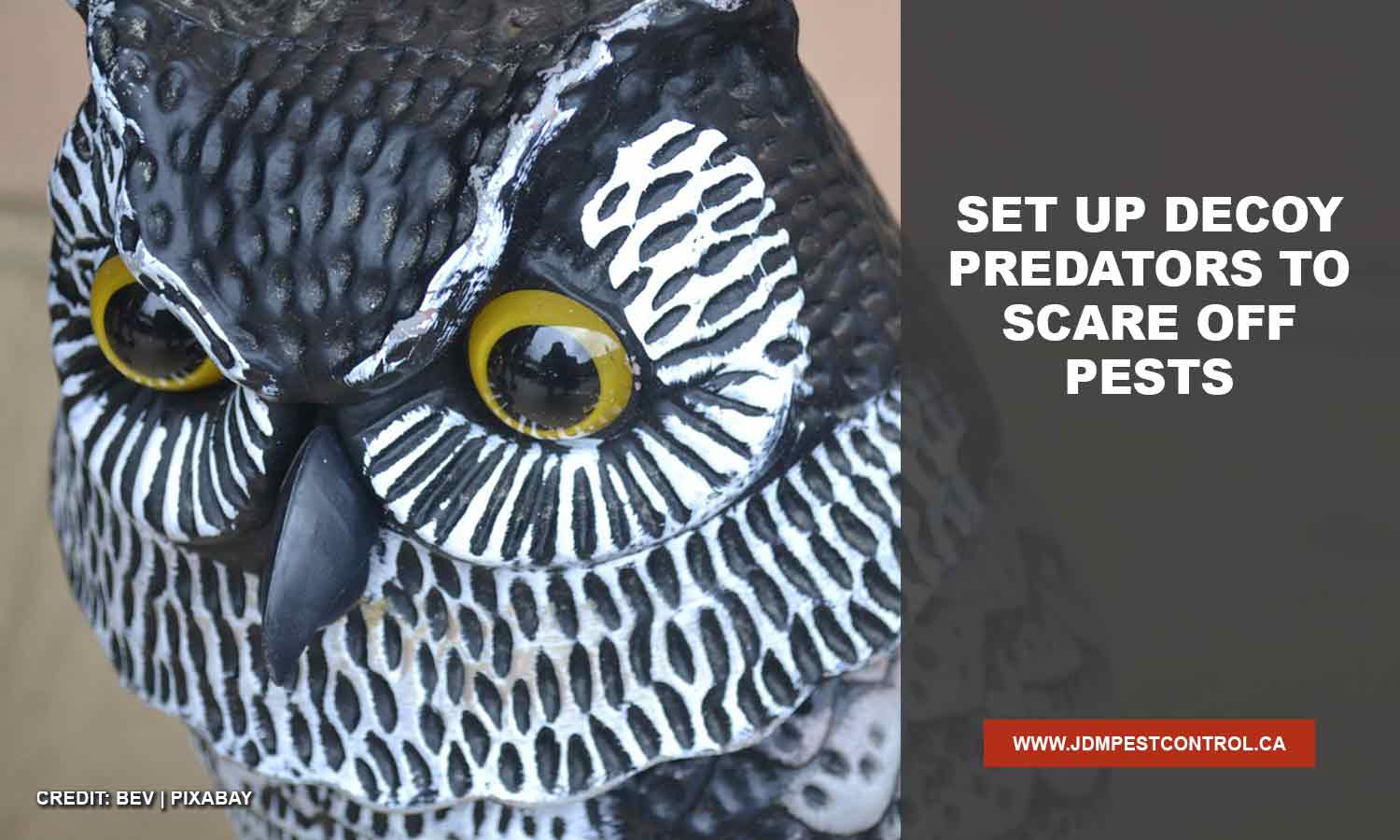
Decoys can provide some measure of deterrence to keep birds out of the garden. Decoys can take the form of various predators that prey on common pest birds (e.g. dummy owls). However, most birds are smart enough to recognize a fake predator, especially if you leave the decoy in one place for several days. For maximum effectiveness, remember to move the decoy every day to different spots around the garden to simulate the movements of a real predator. Use random locations to avoid leaving a pattern the birds can follow. You can also bench some of the decoys some days and leave the others to make things more confusing.
-
Set up distractions
Birds are always aware of their surroundings as a way of hunting and evading predators. Take advantage of that trait by employing plenty of distractions to make pest birds uncomfortable and keep them from sticking around for long.
Cut out strips of aluminum foil to and attach them to trees and shrubs. As birds fly near your garden, the strips can reflect the light into their eyes and startle them into flying away. To maintain safety around the neighbourhood, do not put the strips where drivers can see them since these strips can cause visibility issues.
-
Use sonic deterrents
Compared to smell-based deterrents (which are a common DIY tactic for most pests), you may have better luck with sound-based repellents instead. Many sonic bird repellents broadcast distress calls of particular species to warn other birds to stay away from your home. Other repellents play recordings of predator growls and bird calls, which can trick pest birds into thinking predators abound around your home.
Set your speakers high to ensure they reach a point where your target birds can hear the simulated sounds. Consider investing in motion-based sensors so passing birds can trigger the recording and get startled into leaving. For extra effectiveness, turn off the speakers randomly to simulate the unpredictability of predators and leave your pests guessing.
When it comes to looking for methods to deter pest birds, it’s important to remember there’s no one foolproof method. To get optimal results, combine and rotate different remedies to keep birds away. Birds are smart; if you want to keep them away for long you have to switch tactics every so often.
When you’re looking for reliable pest control for birds, rats, mice, and more, call JDM Pest Control. We have a wealth of experience tackling pest problems to ensure our clients are satisfied long after we leave. Call us now at (416) 729-3568 for a free assessment!
